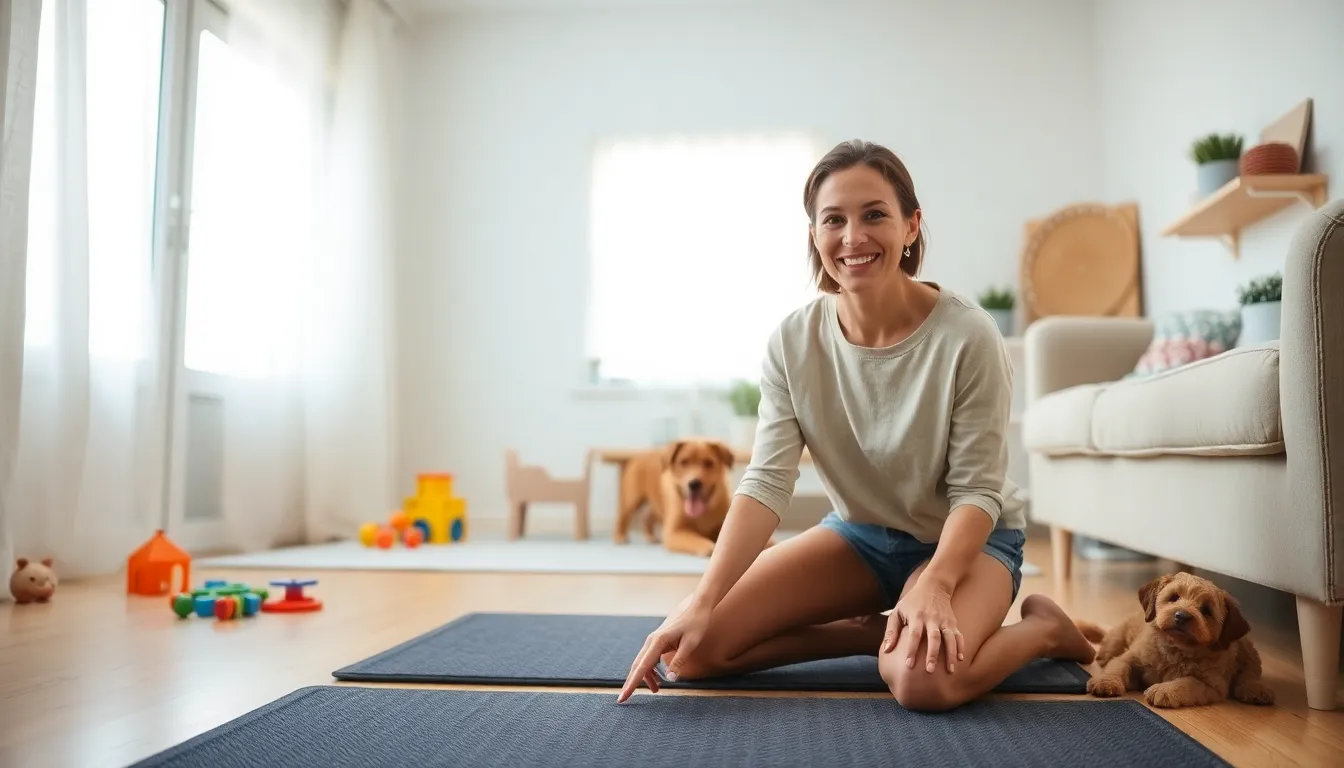Home is where the heart is, but it can also be a treasure trove of potential hazards. From slippery floors to mischievous pets, it’s easy to overlook the little things that could turn a cozy evening into a chaotic adventure. Thankfully, keeping a safe home doesn’t have to feel like a full-time job or a scene from a horror movie.
Table of Contents
ToggleImportance Of Home Safety Tips
Home safety tips play a vital role in preventing accidents and injuries. Ensuring a secure environment not only protects individuals but also provides peace of mind for families. When potential hazards like slippery floors exist, awareness and proactive measures reduce risks.
Prioritizing safety measures keeps everyone safe during daily activities. Simple practices such as securing rugs or using non-slip mats create stability. Playful pets may cause unexpected accidents, so safeguarding spaces through proper training prevents mishaps.
Regularly checking smoke detectors and carbon monoxide alarms significantly lowers risks. It’s recommended to test these devices monthly and replace batteries annually. Keeping fire extinguishers accessible also supports safety during emergencies.
Creating an emergency plan establishes a clear response in unexpected situations. Knowing escape routes and designating meeting points ensure swift action. Family members should practice drills to reinforce preparedness.
Childproofing areas is crucial for households with young children. Installing safety gates and outlet covers prevents access to hazardous spaces. Encouraging children to learn about safety further enhances their awareness.
Finally, securing doors and windows acts as a powerful deterrent against intruders. Reinforcing locks and installing security systems can reduce the risk of break-ins. Taking steps to maintain a safe home environment fosters a sense of security for everyone.
Common Home Hazards

Home hazards can pose significant risks. Identifying specific dangers helps create a safer living environment.
Fire Hazards
Fire hazards commonly include cluttered areas and faulty wiring. Ensure smoke alarms work by testing them monthly. Keep fire extinguishers accessible and check expiration dates. Cooking frequently leads to fires, so monitor pots and pans actively. Limit flammable materials, such as paper and fabric, near heat sources. Establish a clear evacuation plan for all household members.
Electrical Hazards
Electrical hazards arise from overloaded outlets and damaged cords. Avoid using extension cords as permanent solutions. Check cords for fraying and replace any damaged ones immediately. When working with electrical items, prioritize using ground-fault circuit interrupters (GFCIs) in wet areas. Involve a professional electrician for significant wiring issues and any concerns. Regularly inspect appliances to ensure they’re functioning safely and efficiently.
Slips And Falls
Slips and falls represent a primary cause of injuries in homes. Maintain clear pathways by removing obstructions like shoes and toys. Use non-slip mats in kitchens and bathrooms to minimize accidents. Ensure good lighting in stairways and hallways to enhance visibility. Grab bars in bathrooms provide support for those at risk of falling. Regularly check for loose floorboards or loose rugs that could increase the likelihood of falls.
Essential Home Safety Tips
Home safety plays a crucial role in maintaining a secure living environment. Implementing simple strategies can significantly reduce risks while enhancing peace of mind.
Securing Your Home
Start by reinforcing doors and windows. Use deadbolts and consider adding smart locks for added security. Install security cameras to monitor entry points and discourage intruders. Keep valuable items out of sight to avoid attracting attention. Utilizing outdoor lighting can deter potential burglary attempts. In addition, establish routines for locking doors and windows when leaving the house or at night.
Fire Safety Measures
Regularly check smoke alarms for functionality, replacing batteries at least once a year. Maintain accessible fire extinguishers in key areas like the kitchen and garage. Consider installing a fire blanket for small kitchen fires. Develop a clear evacuation plan, outlining multiple escape routes in case of emergencies. Designate meeting spots outside the home for family members. Familiarize everyone with the plan to ensure efficient action if a fire occurs.
Emergency Preparedness
Create an emergency kit containing essential supplies for various scenarios. Include items such as water, non-perishable food, a flashlight, and a first-aid kit. Ensure all family members know the location of these supplies. Staying informed about local emergency services can facilitate quicker responses in crises. Regularly review and update emergency contact information, making it easily accessible for all household members. Practicing regular drills enhances readiness when emergencies arise.
Child And Pet Safety
Child and pet safety are crucial in maintaining a secure home for everyone. Ensuring a safe environment involves a few essential practices.
Safe Practices For Children
Childproofing areas reduces risks of accidents. Use safety gates at stairs and secure heavy furniture to walls to prevent tipping. Store harmful substances like cleaning products high out of reach. Teach children about fire safety and establish family fire escape routes. Regularly check toys for small parts that may pose choking hazards. Encourage children to play in designated safe areas with age-appropriate activities. Set rules regarding the use of electronics to ensure proper supervision. Clear pathways of clutter keeps trips and falls at bay. By proactively addressing these issues, households foster a protective space for young ones.
Pet Safety Tips
Pets also require a safe environment. Keep harmful foods such as chocolate and grapes securely stored away. Use proper pet gates to restrict areas if necessary. Regularly check leash and collar for any wear or damage before walks. Ensure all electrical cords can’t be accessed or chewed. Secure trash bins to prevent curious pets from rummaging through them. Designate a safe space for pets to retreat during stressful situations like storms or loud noises. Maintain an up-to-date vaccination status and schedule regular veterinary check-ups. These practices protect the well-being of pets and contribute to a safer home.
Creating a safe home environment is essential for every family. By taking simple yet effective measures, individuals can significantly reduce the risk of accidents and injuries. Regular maintenance and proactive safety strategies not only protect loved ones but also foster peace of mind.
Incorporating safety tips into daily routines makes a noticeable difference. Whether it’s securing rugs or checking smoke alarms, each step contributes to a more secure living space. Prioritizing safety ensures that homes remain havens for both children and pets. Embracing these practices will lead to a safer and more enjoyable home life.



